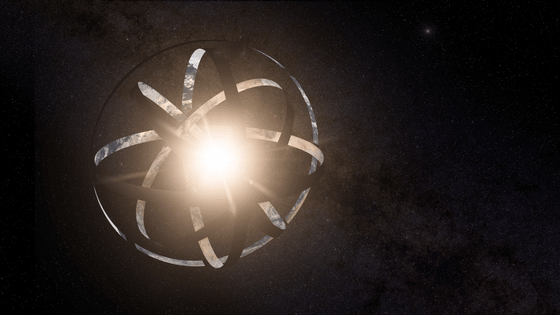Research results show that there are seven candidates for 'Dyson spheres' in the galaxy, where alien megastructures envelop stars

Humans obtain energy from the sun through solar power generation, which is achieved by covering the Earth with solar panels, but more advanced civilizations may try to collect all the energy emitted by the star by using
Project Hephaistos – II. Dyson sphere candidates from Gaia DR3, 2MASS, and WISE | Monthly Notices of the Royal Astronomical Society | Oxford Academic
https://academic.oup.com/mnras/article/531/1/695/7665761
Alien 'Dyson sphere' megastructures could surround at least 7 stars in our galaxy, new studies suggest | Live Science
https://www.livescience.com/space/astronomy/alien-dyson-sphere-megastructures-could-surround-at-least-7-stars-in-our-galaxy-new-studies-suggest
Astronomers are on the hunt for Dyson Spheres - Universe Today
https://www.universetoday.com/166921/astronomers-are-on-the-hunt-for-dyson-spheres/
For over half a century, humans have been searching the cosmos for messages from aliens, but so far have not found any credible results. Some astronomers suggest that the reason we are unable to make contact with extraterrestrial civilizations is not because they don't exist, but because we simply don't believe there is intelligent life on Earth, or that our solar system is worth visiting.
So, rather than waiting for an advanced alien civilization to send us a message, Project Hephaestus is a SETI project launched in Sweden that aims to find the Dyson spheres that such civilizations would build.

By
Whether or not such an incredible technology actually exists, a Dyson sphere would emit waste heat from a massive amount of excess energy.
In this study, project leader Erik Zachrisson of Uppsala University and his team analyzed data from a variety of observational projects, including the Wide-field Infrared Explorer (WISE) , to search for excess infrared radiation from more than 5 million stars in the Milky Way galaxy.
This resulted in the identification of 368 objects, of which 328 were ruled out as a mixture of infrared sources, 29 were eliminated as irregularities, and 4 were rejected as nebulae.

After filtering out the questionable data, the team identified seven candidates for Dyson spheres. All of the stars found are M-type dwarf stars , smaller and less luminous than the Sun, and all of them are located within 1,000 light years of Earth, which is roughly the same distance as our own neighborhood in the vastness of the universe.
The researchers are not entirely sure that the candidate they found this time is a Dyson sphere. They have not completely ruled out the possibility that it could be a superheated asteroid or other celestial debris orbiting close to the host star. However, because the formation of debris disks around M dwarfs is extremely rare, the researchers wrote in their paper that 'it is not easy to explain the observed infrared excess radiation with any astrophysical phenomenon.'
◆ Forum is currently open
A forum related to this article has been set up on the official GIGAZINE Discord server . Anyone can post freely, so please feel free to comment! If you do not have a Discord account, please refer to the account creation procedure article to create an account!
• Discord | 'Do you think there are alien structures like Dyson spheres in space?' | GIGAZINE
https://discord.com/channels/1037961069903216680/1240956915438059551
Related Posts:
in Free Member, Science, Posted by log1l_ks







